A Marist who walked with death – Fr Richard O’Sullivan sm
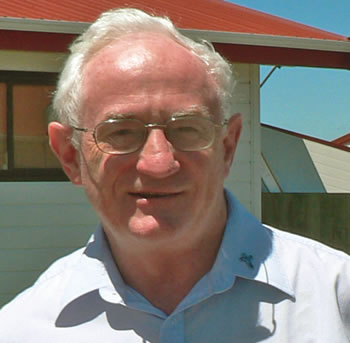
by Fr Neil Vaney sm
Early life in Australia
Richard O’Sullivan was a Marist who flirted with death many times. He is best remembered for his heroic actions on Bougainville in 1942-43 where he helped engineer the escape of a group of women religious by submarine; then, after capture by the Japanese, he escaped and for over a year worked as a coast-watcher tracking the movement of Japanese naval forces. Such intelligence played a critical role in reversing the tide of Japanese conquest flowing southwards in the Pacific. Yet he could easily have died on at least three occasions before that.
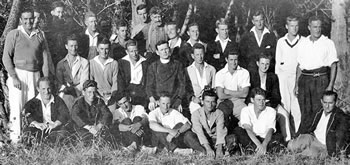
Students at Waimarama, two days before the 1931 earthquake. Richard O'Sulllivan is seated, front right
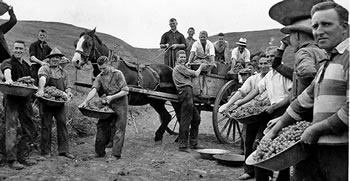
Grape-picking at Greenmeadows. Richard O'Sullivanon the cart with a hat.
Born in Cooktown in 1901, he was raised in Ingham in the Herbert River district of Far North Queensland, growing up in country noted for wild extremes of climate. His family was involved in hotels, stores and the management of cane-fields. His first brush with death came through this latter work when he managed to race through the burn-off of a huge cane-field. Not long after, he was swept from the deck of the flood-prone Burdekin river. In a land of massive watercourses, the Burdekin has the highest peak volume of all the Australian rivers, sometimes flooding up to three times between December and March. In 1875 it rose sixty feet in just a few hours, while in 1927 it reached a peak at 66 feet over its normal summer level at Selheim.
Becoming a Marist
Dick received his secondary education with the Christian brothers at Nudgee in Brisbane and clearly his religious faith was deeply rooted, leading him to apply to join the Marists. After a short time at an initial formation house in Mittagong, he sailed to New Zealand, beginning studies at Greenmeadows, Hawkes Bay, in 1930.
His third brush with death came in the massive earthquake of 3 February 1931. Like the seven students and two priests who died, Dick was also pinned under the great stone blocks of the chapel as they tried to flee outdoors. He was severely injured but eventually recovered, completing his studies in 1936 when he returned to the newly-erected Australian province. There he continued his life-long pattern of setting benchmarks, being one of the few Marists to be ordained in a college chapel, at St John’s Woodlawn, on 11 July 1937. He was also the first bursar at the new seminary at Toongabbie, but was there just a few months before being accepted to be a missionary in the Solomon Islands.
Solomons adventures
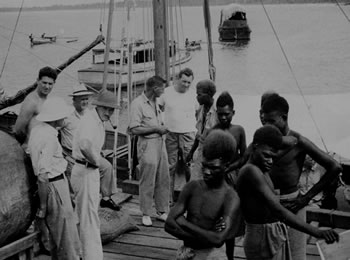
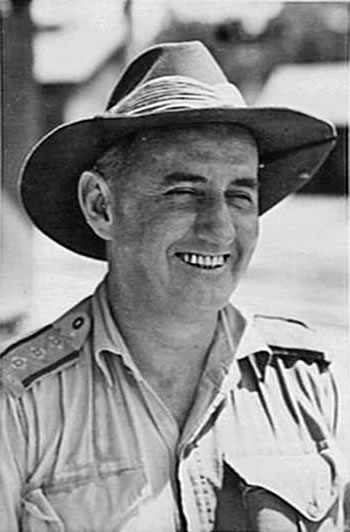
Fr Richard O'Sullivan
Dick had been working on Bougainville in the North Solomons when the Japanese attack on Pearl Harbour happened in December 1941. When Malaya and Singapore fell in quick order, the Solomons were left almost defenceless, apart from 24 Australian commandos stationed at an unfinished airstrip at Buka and the same number at an RAAF patrol plane base at Tulagi harbour. Japanese forces began to make their move to take the Solomons in March; once these were taken, New Hebrides and New Caledonia would quickly fall and the Japanese could threaten American naval routes to Papua New Guinea and Australia, as well as having the ability to dominate sea approaches to Brisbane and Sydney.
On 3 May the Japanese attacked Tulagi with four warships. Once in control of Tulagi and Port Moresby, the Japanese air force would be able to bomb Australia, Fiji and Samoa. Before they could implement this plan, there occurred the Battle of the Coral Sea. Despite heavy losses, the American navy was able to protect PNG and the wounded Japanese naval force fell back to Rabaul, though still maintaining a force in Tulagi.
During the six months leading up to this fighting, Australian naval intelligence had developed an important strategy, implemented on the ground by Lieutenant Colonel Eric Feldt, who had lived many years in PNG, knew the people and the islands well, and was specially recommissioned for this task.
His project was to set up a chain of coast-watching stations using heavy and bulky teleradios. Though difficult to move and reassemble, they were very efficient with a range of 400 miles by voice and 600 by Morse code. Feldt placed eight of these in the Solomons area, two being in Bougainville and three on Gaudalcanal. It was on this island that some of the heaviest fighting occurred; the coast-watchers were able to report the movement of Japanese units down from New Britain, giving the US and Australian forces critical time to organise counter- attacks.
Missionaries in danger
In the second half of 1942, the situation began to look grim for the missionaries stationed in the North Solomons. Four missionaries were executed at Ruavatu on Buka Island and a small number of sisters fled from there down to Bougainville. Bishop Thomas Wade, a Marist whose diocese included the North Solomons, gave permission for all sisters to be evacuated from the area. This was no easy task. Those on Buka were American sisters from St Joseph of Orange, a Californian order. In Bougainville there were a number of sisters scattered over five different stations, four SMSM sisters being at Soveli, ninety miles from where O’Sullivan was stationed at Asitavi. Another group of two priests and three sisters were at the mission of Tarlene under strict orders from the Japanese not to move, a guard being placed there to make sure they obeyed these orders. Two of the sisters were not mobile, one infirm from old age, the other with a damaged knee. Between them the mission priests put together a daring plan, involving a night escape, with the sisters being carried in litters. They reached the safe village of Tsipatavai close to deep water beaches. Because of fresh Japanese landings, the group had to make several long mountainous journeys. O’Sullivan risked his own life to guide these; the group was finally taken off by submarine on New Year’s day 1943. Some time after this, O’Sullivan was captured by Japanese forces. Managing to escape, he evaded them for the next fourteen months, helping with coast-watching duties whenever he was able, till he too was finally rescued by submarine. He then joined the Australian army’s 3rd division, working as a chaplain until the war ended.
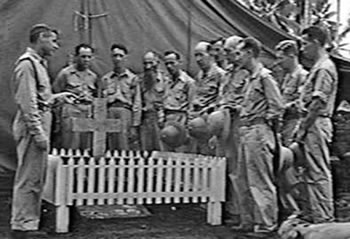
Bougainville, Solomon Islands.Marist priests who successfully evaded the Japanese on the island for fourteen months gather around the graves of two who were caught by the Japanese.
Left to right: Chaplain J. J. O'Neill, Bro Julius, Fathers Henry Herbert, Richard O'Sullivan, Albert Label, James McConsville, Bro Henry, Bishop Aubin, Bishop T. J. Wade, Father Henry Fluct, Bro Paul
Faithful to the end
Returning to the Solomons at war’s end he was given the task of restoring the mission stations. He had the post of mission bursar and strove to restore the chain of stations, though several times he became so ill that he had to return home for treatment. In 1972 he was working at Manentai, a station he had originally set up, when it was ravaged by a cyclone that wiped out nearly all crops and roads. Together with the locals, he subsisted on a diet of peanuts and pawpaws. In attempting to restore the road out, he was badly injured when he fell from a tractor, causing him to be taken back to hospital in Brisbane where other ailments were discovered. It was there that he died on 30 September 1972 in the Greenslopes Repatriation Hospital.
Like many Marists, Richard O’Sullivan was committed, generous but understated. His adventures and flirting with death were remarkable. Again, like many other Marists, his courage and tenacity remain largely untold and unsung – which is a great pity.
 Entries(RSS)
Entries(RSS)